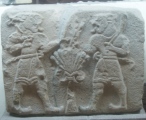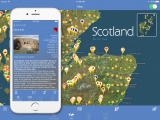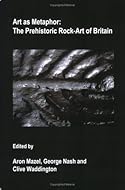<< Our Photo Pages >> Arslantepe - Ancient Village or Settlement in Turkey
Submitted by AlexHunger on Monday, 26 March 2007 Page Views: 6809
Multi-periodSite Name: Arslantepe Alternative Name: Aslantepe, MelidCountry: Turkey
NOTE: This site is 12.619 km away from the location you searched for.
Type: Ancient Village or Settlement
Nearest Town: Malatya Nearest Village: Orduzu
Latitude: 38.381818N Longitude: 38.361340E
Condition:
| 5 | Perfect |
| 4 | Almost Perfect |
| 3 | Reasonable but with some damage |
| 2 | Ruined but still recognisable as an ancient site |
| 1 | Pretty much destroyed, possibly visible as crop marks |
| 0 | No data. |
| -1 | Completely destroyed |
| 5 | Superb |
| 4 | Good |
| 3 | Ordinary |
| 2 | Not Good |
| 1 | Awful |
| 0 | No data. |
| 5 | Can be driven to, probably with disabled access |
| 4 | Short walk on a footpath |
| 3 | Requiring a bit more of a walk |
| 2 | A long walk |
| 1 | In the middle of nowhere, a nightmare to find |
| 0 | No data. |
| 5 | co-ordinates taken by GPS or official recorded co-ordinates |
| 4 | co-ordinates scaled from a detailed map |
| 3 | co-ordinates scaled from a bad map |
| 2 | co-ordinates of the nearest village |
| 1 | co-ordinates of the nearest town |
| 0 | no data |
Internal Links:
External Links:
Neo-Hittite city with later Assyrian and Persian occupation within mound. Originally inhabited from the 5th millennium BCE.
You may be viewing yesterday's version of this page. To see the most up to date information please register for a free account.




Do not use the above information on other web sites or publications without permission of the contributor.
Click here to see more info for this site
Nearby sites
Click here to view sites on an interactive map of the areaKey: Red: member's photo, Blue: 3rd party photo, Yellow: other image, Green: no photo - please go there and take one, Grey: site destroyed
Download sites to:
KML (Google Earth)
GPX (GPS waypoints)
CSV (Garmin/Navman)
CSV (Excel)
To unlock full downloads you need to sign up as a Contributory Member. Otherwise downloads are limited to 50 sites.
Turn off the page maps and other distractions
Nearby sites listing. In the following links * = Image available
34.1km E 83° Cafer Höyük Ancient Village or Settlement
54.5km SSE 157° Cendere Bridge* Ancient Trackway
55.6km SE 143° Nemrut Dag* Artificial Mound
55.6km SSE 153° Arsameia* Ancient Village or Settlement
63.6km SSE 162° Karakus Tumulus* Artificial Mound
64.0km S 169° Kilisik Statue Sculptured Stone
79.0km ENE 66° Elazig Museum Museum
82.1km W 269° Aktil Hoyuk* Ancient Village or Settlement
84.3km ENE 64° Harput Relief* Sculptured Stone
91.5km SSE 165° Nevali Cori Ancient Temple
94.0km S 170° Sürük Mevkii Ancient Village or Settlement
94.2km S 169° Gritille Ancient Village or Settlement
97.5km S 187° Girik Tepe Ancient Village or Settlement
97.7km SSW 203° Levzin Höyuk Ancient Village or Settlement
104.4km SSE 165° Titris Höyük* Ancient Village or Settlement
104.9km ENE 76° Boytepe Ancient Village or Settlement
114.2km E 98° Gri Havsarik Ancient Village or Settlement
116.1km E 99° Kikan Harabesi Ancient Village or Settlement
120.4km E 98° Cayonu Ancient Village or Settlement
120.8km E 95° Papazgölü Ancient Village or Settlement
123.1km E 95° Gölbent Mevkii Ancient Village or Settlement
123.4km E 98° Yayvantepe Ancient Village or Settlement
126.5km E 94° Kötekan Ancient Village or Settlement
134.2km S 173° Ayanlar Höyük Ancient Village or Settlement
135.2km SSW 212° Yavuzeli Dolmen* Burial Chamber or Dolmen
View more nearby sites and additional images






 We would like to know more about this location. Please feel free to add a brief description and any relevant information in your own language.
We would like to know more about this location. Please feel free to add a brief description and any relevant information in your own language. Wir möchten mehr über diese Stätte erfahren. Bitte zögern Sie nicht, eine kurze Beschreibung und relevante Informationen in Deutsch hinzuzufügen.
Wir möchten mehr über diese Stätte erfahren. Bitte zögern Sie nicht, eine kurze Beschreibung und relevante Informationen in Deutsch hinzuzufügen. Nous aimerions en savoir encore un peu sur les lieux. S'il vous plaît n'hesitez pas à ajouter une courte description et tous les renseignements pertinents dans votre propre langue.
Nous aimerions en savoir encore un peu sur les lieux. S'il vous plaît n'hesitez pas à ajouter une courte description et tous les renseignements pertinents dans votre propre langue. Quisieramos informarnos un poco más de las lugares. No dude en añadir una breve descripción y otros datos relevantes en su propio idioma.
Quisieramos informarnos un poco más de las lugares. No dude en añadir una breve descripción y otros datos relevantes en su propio idioma.